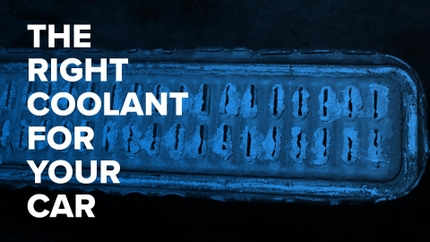- 04/12/2022
- 3 Min Read
- By: Andrew Peng
Volvo Automatic Transmission Fluid: Proper Care & Maintenance
Volvo labeled their late-model Automatic Transmission Fluid as a “lifetime fluid,” relegating fluid flushes and services to the past. It’s a move many automakers have made in today’s motoring climate as, among other things, a “lifetime” fluid means lower running costs and a reduced impact on the environment. Consequently, the move has also resulted in removing any transmission servicing instructions or requirements from the owner’s manuals as the fluid life expectancy eliminates the need for them. Unfortunately, the “lifetime” fluid proves to be anything but that in nearly every circumstance, and many owners are left slipping and hard-shifting.
Lifetime or Long-ish-Life: Understanding Automatic Transmission Fluid
Without understanding the difference between engine oil and transmission fluid, it can be tough to understand why one is “lifetime” and the other needs relatively frequent replacement.
Engine oil is designed to protect the internal rotating components and do a little bit of pressure-based functions. It needs to withstand the extreme heat and pressure of the pistons, connecting rods, crankshaft, and valvetrain at all times while maintaining its shear strength under constant load. The forces seen by the engine’s bearings are far beyond those seen in an automatic transmission. Automatic transmissions have plenty of rotating internal components, but the forces and speeds that occur inside are much different from those inside and engine. Instead, transmission fluid has to deal with being used as a tool rather than purely as lubrication.
Inside an automatic gearbox are an oil pump and valve body, along with a series of planetary gears and clutches. While automatic transmission fluid does lubricate those parts, it primarily serves as the tool used to activate and actuate the clutches and shifting duties. The ATF also dissolves and suspends solids, impurities, and contamination from worn clutch packs, allowing the friction materials to wear evenly and dissipate heat. Like engine oil, ATF has a service life, but because it doesn’t see the extreme forces that engine oil does, the transmission fluid has a much longer life. Typical engine oil changes should occur around every 7500 miles, whereas it's not uncommon to see ATF last well beyond 60,000 miles.
Though with that said, transmission fluid changes do need to happen.
Servicing “Lifetime” Fluid
When I purchased my 2006 P2 Volvo XC90 V8 with 80,000 miles on the clock, it had a particularly odd issue where the tachometer would oscillate up and down about 200rpm while the car was in top gear cruising up a slight incline. I thought nothing about it until I also started to experience the infamous shift flare on the 2-3 upshift at part throttle. Suddenly, I found the renewed motivation to service my transmission with some fresh ATF.
The ATF required by Volvo for my transmission fluid change had to meet the JWS3309 specification. That wasn't difficult as the Volvo-branded transmission fluid and those offered by Pentosin and Aisin were available to choose from. You shouldn't have too much trouble if you need to grab an emergency quart from the local auto parts store either, as Toyota, Mazda, and Ford all used a JWS3309-spec oil. However, not all Volvo transmission fluid is the same, so ensure you check the owner's manual or the local dealership to ensure you have the right stuff.
Being the one-man wrench I am, I set the XC90 on ramps and unplugged the ATF heat exchanger lines that run to the radiator. From there, I started the engine, and the car began to pump out the old fluid from deep within the mechanical bowels of the transmission. At the same time, I had the fill port open, and I was pouring in fresh ATF. This was done until the fluid coming out changed color from a dull maroon to a bright cherry red, which took about 10 quarts. Then, I put the car back down on level ground, topped off the transmission fluid, and put everything back together.
It seemed as though my efforts were in vain after a quick drive. The car still occasionally had a violent flare and bang during the 2-3 upshift, and mild acceleration in top gear still had the 200rpm oscillation. Losing hope that the fluid flush would be the fix, I started to look into local transmission shops that could rebuild the AW TF-SC80 in my Volvo. Later, I realized it would have been beneficial to have the transmission computer reset and re-learn.
However, conditions began to improve over the next few hundred miles. The 200rpm fluctuation was gone entirely, and by the time I hit 1000 miles on the fluid change, the 2-3 shift flare disappeared. Shifts were firm and quick, and the transmission was operating as it was designed. Today, with 28,000 miles on the fresh fluid, none of the old issues have come back.
After I drained the original fluid from the transmission, I collected a sample and sent it off to Blackstone Laboratories for analysis. The result showed a very high amount of dissolved particulates, wear metals, and a lower-than-usual viscosity, a typical finding for fluid with a good amount of miles. Fortunately, there was no sign of coolant contamination from a leaking radiator oil cooler, a problem that plagues the early T6 models.
My results weren't far from the norm. Many people, including those with the earlier 5-speed automatics, have had performance issues that were solved with a simple fluid exchange. Like many other manufacturers, Volvo advertised the fluid as a "lifetime fill," meaning the fluid wouldn’t require changing for the life of the vehicle, but that clearly isn’t the case. I can conclude that my car should have had its ATF changed at least every 30-40k miles.
Consider this experience in mind the next time a dealership or car manufacturer tells you any fluid is a "lifetime" fluid. With proper care and maintenance, your car will have many more miles left in its lifetime.










